Images
1. Back Binding of Fulgentius' De Fide ad Petrum
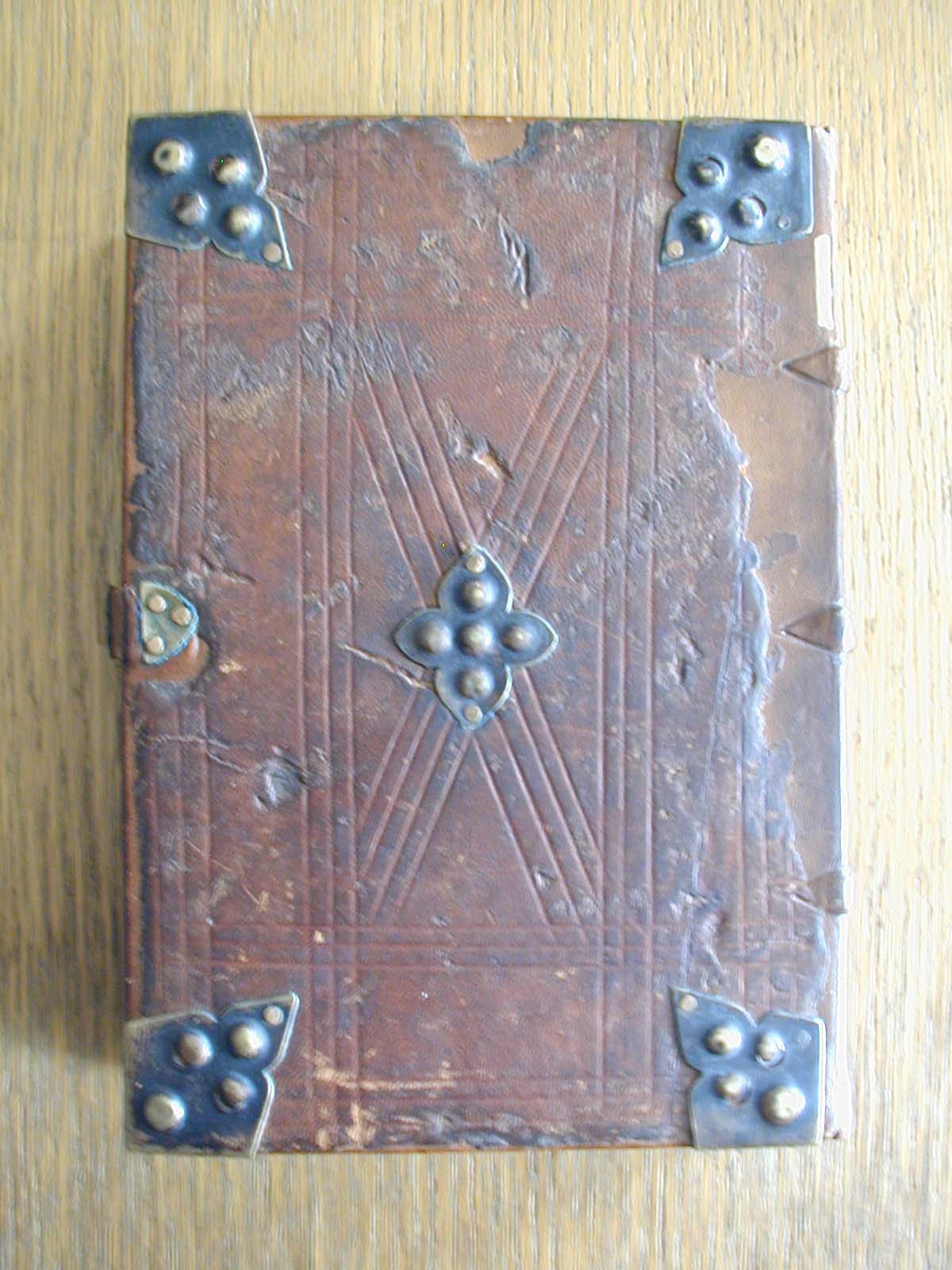 |
2. Folio 1r from Fulgentius
 |
The images are from De Fide ad Petrum by Fabius Claudius Gordianus Fulgentius (born 468, died 533).
The images are from the library of the archdiocese of Kalocsa and profound thanks to Fischerné Grócz Zita, the director of the library, for assistance with taking these pictures.
The manuscript, Kalocsa Ms. 20.672, is from the first half of the 11th century, although the back binding in Image 1 is probably from the 15th century.
The script is Carolingian minuscule.
(Continued below)
Return to Table of Contents |
3. Folio 11r from Fulgentius
 |
4. Folio 51r from Fulgentius
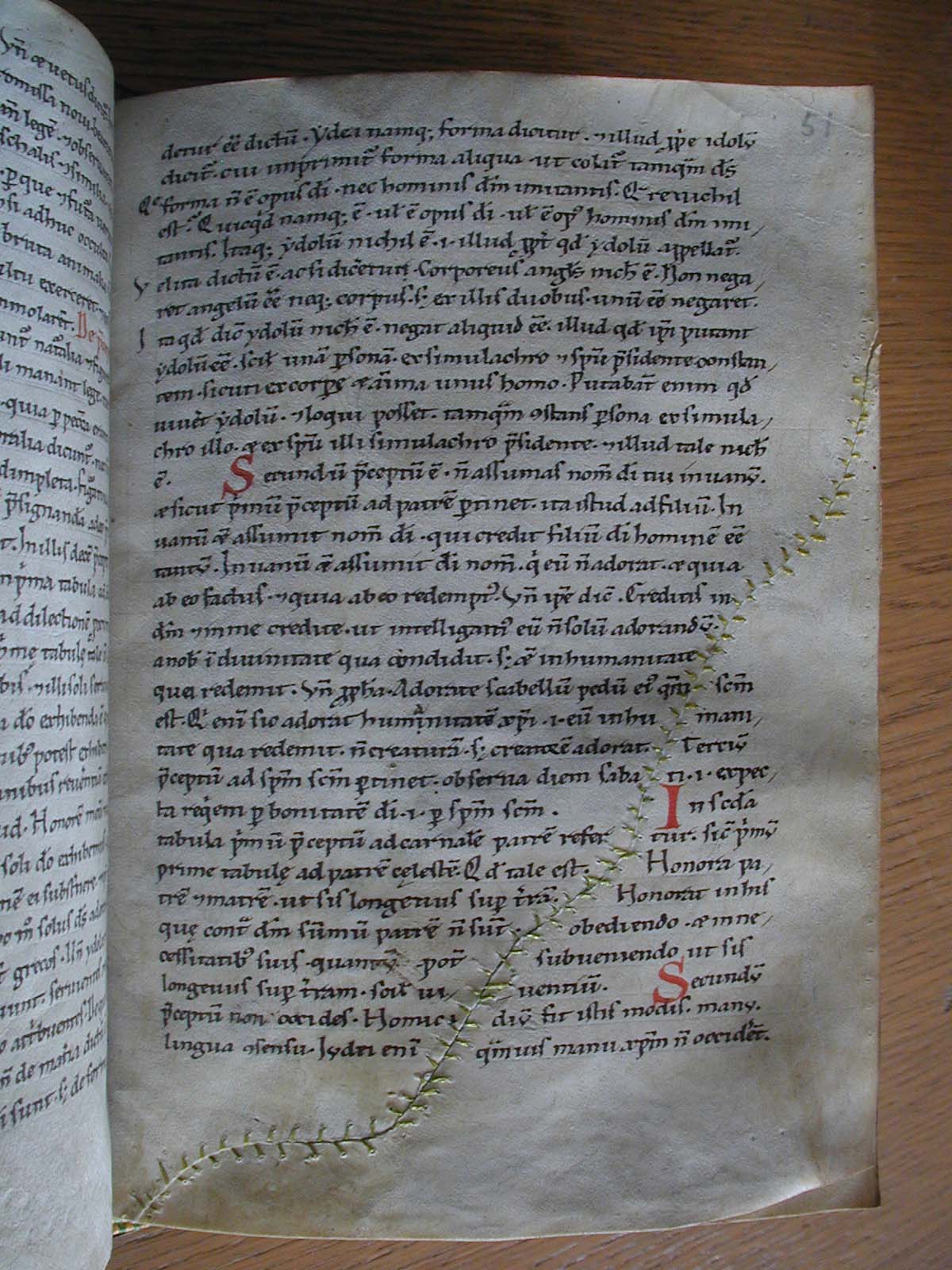 |
In image 4, note the stitching before the manuscript was copied onto vellum.
Fulgentius lived in the preiod characterized by conflict between the Church and Arianism, Semipelagianism, and other doctrines
declared to be heresies. He was periodically exiled from North Africa (to Sardinia) and lived a devout life characterized
by extreme self-mortification. In addition to De Fide ad Petrum, he wrote numerous other works, such as
De veritate praedestinationis et gratiae Dei, De remissione peccatorum, Liber contra Arianos and others.
See more details
(Continued below)
Return to Table of Contents |
5. Folio 58r from Fulgentius
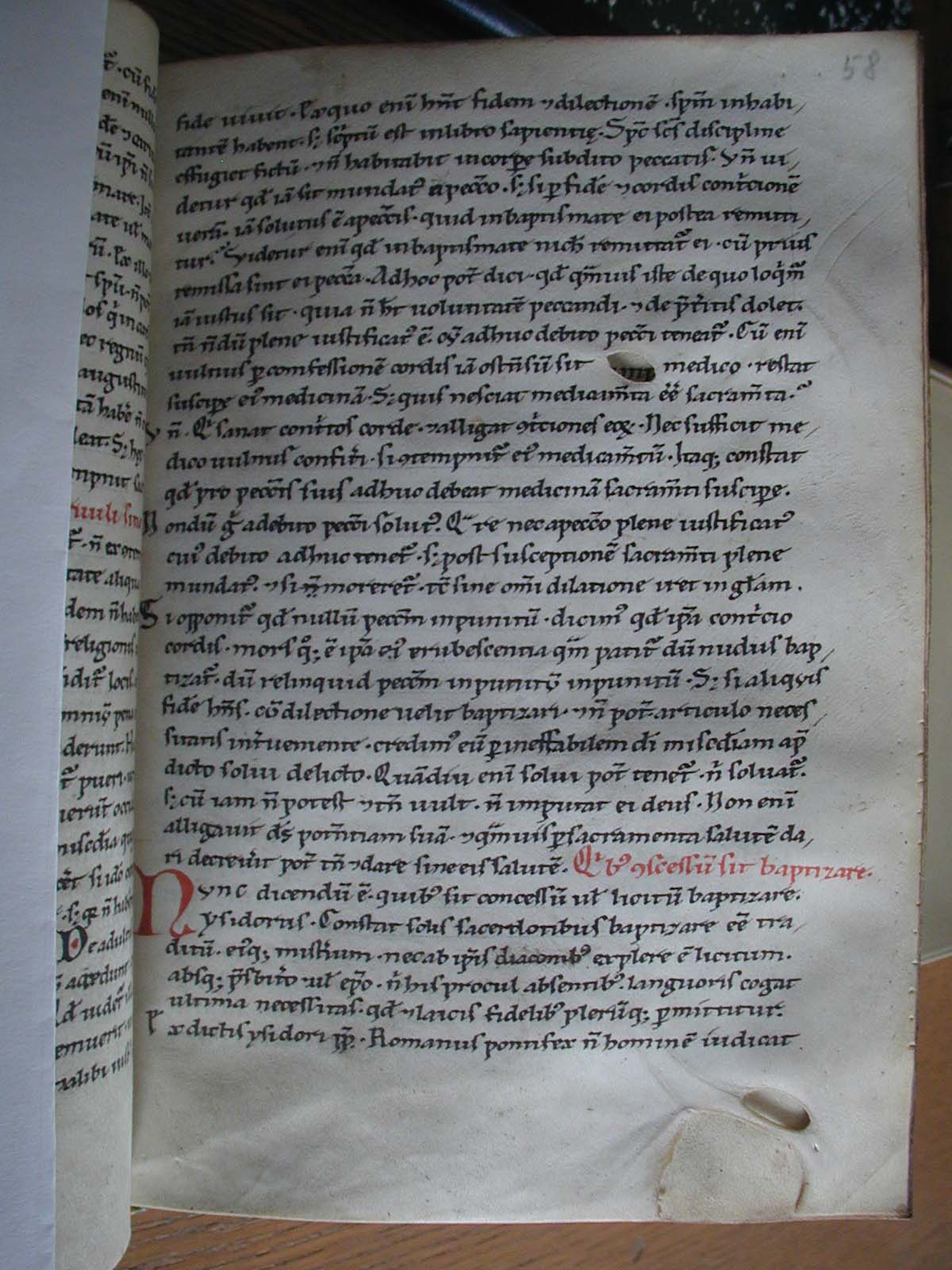 |
6. German poem in the same codex
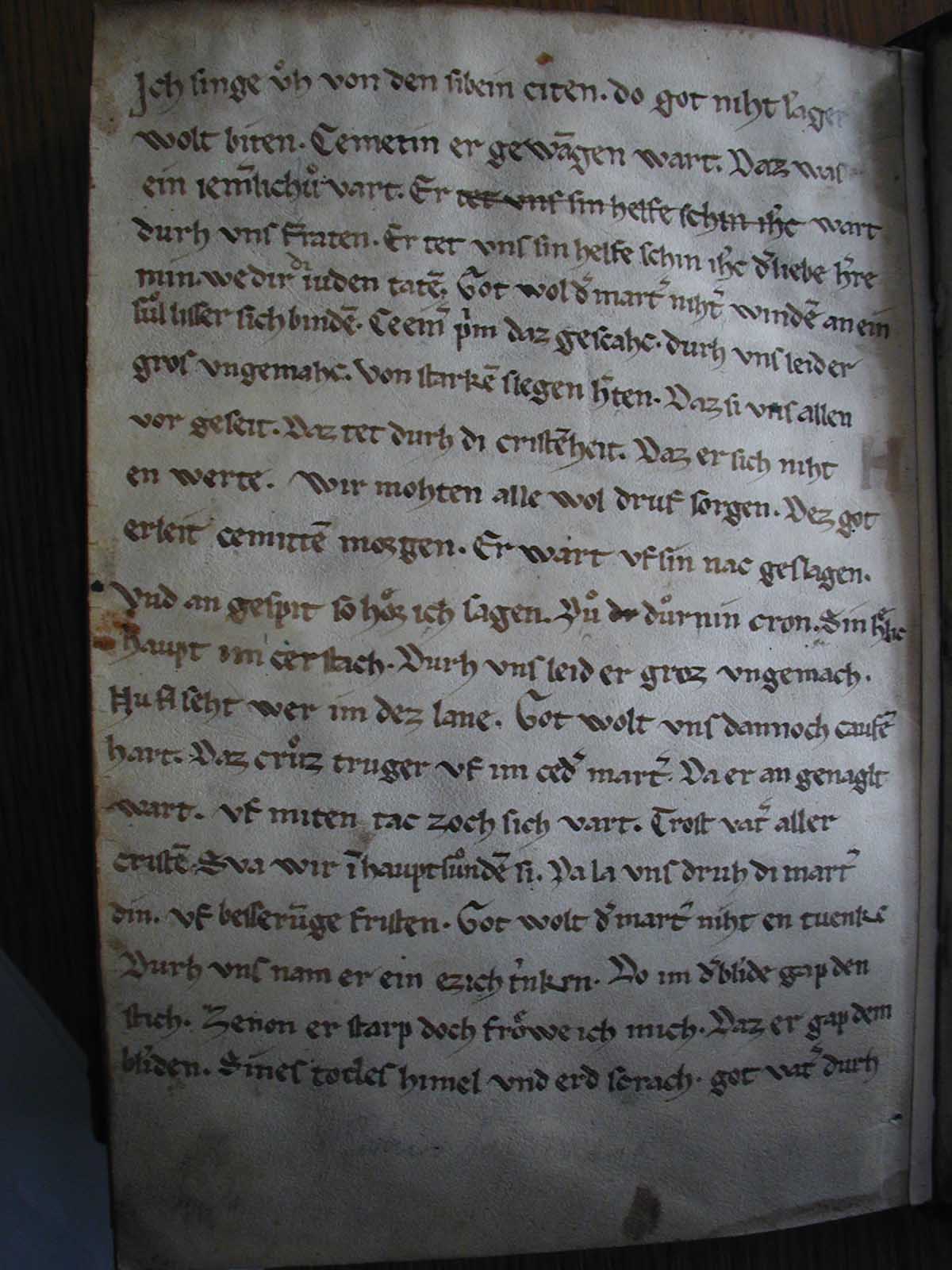 |
Images 6 and 7 are from a German poem that appears bound in the same Fulgentius codex,
from the 15th or perhaps the late 14th centuries, attributed to the ”Monk of Salzburg,“ who was active at the court of archbishop Pilgrim II
of Puchheim in the second half of the 14th century. The title of the work is ”Lied von den sieben
Tagzeiten.“ This Monk wrote some very secular poetry. The script is gothic minuscule. For a transcription of the poem into modern characters,
click here. For the translation, click here
Thanks to Prof. Evelyn Meyer of Saint Louis University for both the transcription and the translation.
Return to Table of Contents |
7. The German Poem continued
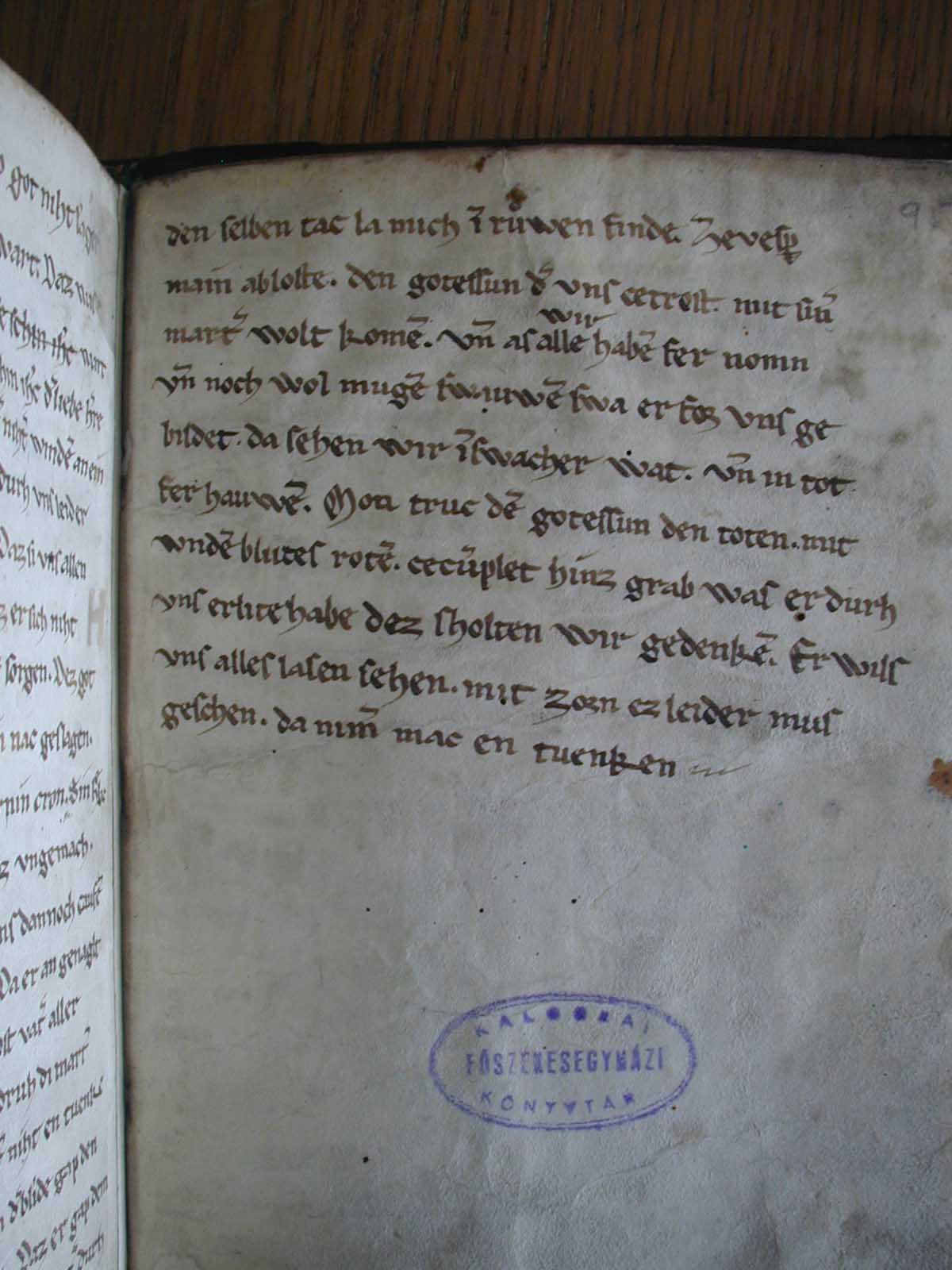 |
Frame intentionally left blank |
Contrary to the belief of the Kalocsa librarian, to the effect that the codex was purchased by Archbishop Patatich, it is likely that it was bought by Archbishop Kollonics
who was archbishop after Patatich, having first been bishop of Nagyvárad (1780-88). It thus seems likely that the codex was purchased in
the early 1780s in the auctions of monastic libraries. See Pál Winkler, A kalocsai érseki kastély és a főszékesegyházi
könyvtár története, Kalocsa, 1932, p. 40 and András Vizkelety, Beschreibendes Verzeichnis der altdeutschen Handschriften in Ungarischen Bibliotheken,
Budapest, Akadémiai Kiadó, 1973, 2 vols.; 2, pp. 214-215.
Return to Table of Contents |






